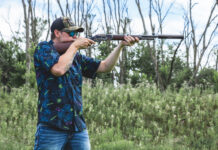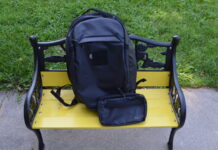By Katherine Williams
In the trying economic times the United States is facing right now, cities and municipalities across the country are facing unique challenges. In the light of federal allotment cuts and shrinking city budgets, it’s often the front line departments – like police, fire and emergency medical services – that are the hardest hit by these budgetary issues.
Public safety departments are crucial to many communities, but that hasn’t prevented budgets from being reduced in nearly a quarter of American cities, in up to a third of those cases, budget reductions in the police department specifically have been over five percent. [1] These budget reductions have led to layoffs, not replacing outdated equipment and technology, and even in some cases, municipalities contracting out public safety duties to nearby cities.[2]
One of the most crucial cuts some police departments are dealing with falls into safety equipment for police officers. In some cases, such equipment simply comes off the table when the budget axes fall[3], but more often it’s the officers themselves who have to foot the bill. Research surveys indicate approximately 53.5% of American police officers receive an allotment to pay for essential equipment, including uniforms and safety equipment[4], as opposed to the cities buying the equipment themselves or the officers simply being required to pay for their own equipment outright.
Some officers state that allotment methods are preferred, because it allows them to purchase the equipment they would prefer to use, and if it’s more expensive than what their department will provide for, they can use the allotment to make it more affordable for themselves – though other officers state that it should always be the department’s obligation to purchase all necessary equipment.
Regardless of how the costs are covered, often the best solution to these financial constraints is to look for innovative new equipment that is more cost-effective than previous options. With up to 20% of police officers being required to pay for their own body armor, and traditional armored vests costing upwards of $500, police officers need have less expensive options that are just as effective, if not more so. A study published in the Journal of Occupational and Environmental Hygiene – and paid for by non-profit association the RAND Corporation – found officers who do not routinely wear body armor are 3.4 times more likely to suffer a fatal injury from a torso shot than officers who routinely wear body armor.[5]
The author of the study, Tom LaTourrette, also noted that the armor currently available had limitations that needed to be overcome, stating, “…body armor was most often defeated when bullets entered between the side panels or struck an officer above or below the vest, but in some cases armor was penetrated by a bullet from a gun that exceeded the armor’s rating.”
LaTourrette also noted that, “Making body armor more effective will require balancing body area coverage and penetration resistance, while minimizing wearer discomfort and impeding officers’ job performance.” Fortunately those innovations are happening, and at more manageable prices than previous body armor products available, addressing two major concerns to law enforcement departments and personnel.
The Armored T-Shirt, from Legacy Safety & Security, is the most significant innovation available in body armor today. The National Institute of Justice (NIJ) – who monitors and regulates body armor standards in the U.S. – states that one of the greatest challenges to wearing body armor is that it be comfortable and well-fitted – something that is particularly difficult for female officers.[6] The Armored T-Shirt provides superior protection, better overall body coverage, better fit and is far more comfortable than traditional armored vests.
The Armored T-shirt’s base garment is a compression shirt, with reinforced mesh pockets inside, to hold the armor plating tightly to the body. The plates are situated both in the front of the officer and along the sides, with careful attention paid to not leaving a gap between these two sections, where a bullet could penetrate. There are multiple benefits to using a compression garment in this manner. Compression sportswear keeps the muscles warm to prevent muscle strain and fatigue while it wicks sweat away from the body to prevent chafing and rashes. The garment also allows the plates to be held more tightly to the body than with stiff armored vests. Most uniquely, because the plates are removable, the garment is entirely machine-washable – something which is not an option with traditional armored vests.
Another important measure of body armor is ballistic rating and Back Face Defamation (BFD). Body armor functions by spreading the impact of the bullet across the surface of the plate, causing the force to be dispersed and less life threatening. But the BFD of an armored garment must also meet careful guidelines to make sure that the pressure of the impact doesn’t cause the armor plating to intrude too significant toward the wearer’s body, increasing the risk of injury or death.
The plates used in the Armored T-shirt not only meet the ballistic and BFD standards set forth by the NIJ, they far exceed them, and at a quarter of the weight of other leading body armor plating. Plates in existing body armor can exceed 8lbs per plate, but the plates used in the Armored T-Shirt weigh only 1.25lbs each. The Armored T-shirt provides more safety and security for the wearer than traditional armored vests, better fit and body coverage, a more comfortable material and at a fraction of the cost.
Today, more than ever, we need to provide our law enforcement with protective equipment that is affordable without sacrificing safety or usability. The Armored T-shirt is an ideal solution to all these issues, providing superior wearability and safety, at a very affordable price.
For more information about the Armored T-shirt, please visit LegacySafetyandSecurity.com.
Source: https://www.linkedin.com/pulse/real-cost-safety-security-robert-hausman?trk=pulse_spock-articles



